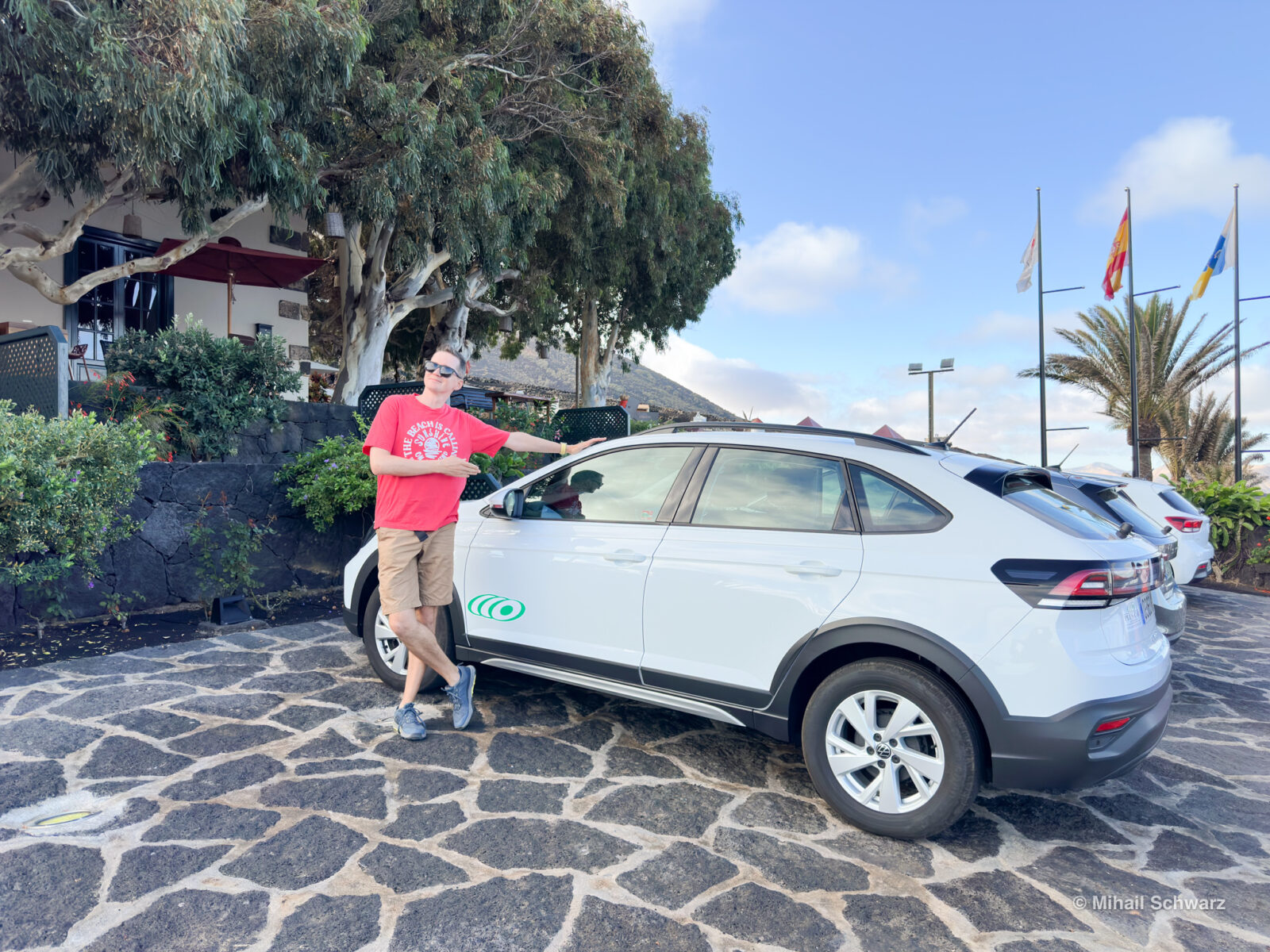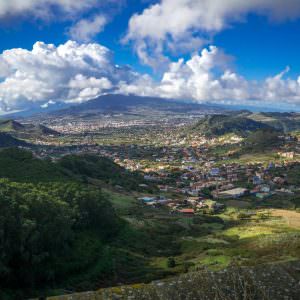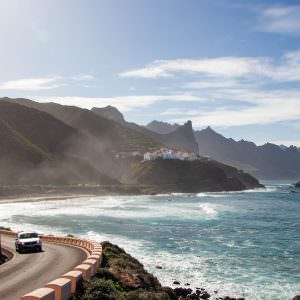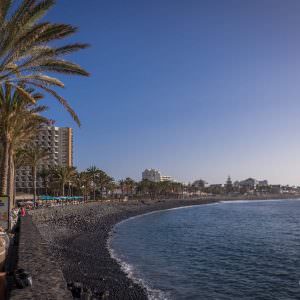Visiting tenerife and looking to rent a car? Good idea. Tenerife is an island, and although the island is equipped with public transport, which makes it easily accessible, having a car allows you to have additional convenience, ease of access to off-the-beaten-path beaches and mountain villages. It also gives you the ability to experience the dramatic volcanic scenery that you would never be able to experience on a public bus. Here is a thorough explanation of the car rental system in Tenerife for beginners.

Reasons to Rent a Car in Tenerife
Tenerife is the largest of the Canary Islands, and traversing the island can be an undertaking if you do not have a plan. The island covers a stretch of land from the southern sandy beaches to the lush forests in the North. Right in the middle, the famous Mount Teide, the highest peak in Spain, is a cool sight to behold. There is available public transportation, but it is not frequent and it does not go to the best tourist spots on the island. A rental car allows you to go anywhere on the island at your own pace and the ability to stop at defined lookouts. You can see authentic local food places called guachinches as well, and do more without visa needing to follow a bus schedule.
Most Recommended Car Rentals Companies in Tenerife
Tenerife has the best car rental services. There is a mix of local and international companies. The most recommended companies include
Local Companies
Cicar, Pluscar and Autoreisen are some of the most recommended local companies. They are great because of their zero-excess insurance service, free extra drivers, and no credit card deposit, along with a few more. Autoreisen is from both Tenerife South (Reina Sofia) and North (Los Rodeos) airports and have more than 25 different car models to choose from.
Another example of a very good recommendation would be Cabrera Medina. They have good reputation for their services all over the Canaries and have pickup spots in both airports and other cities.
They have comprehensive insurance rates, a second driver, unlimited mileage, and no charge for cancellation.
Other Trustworthy Options
RecordGo, Sixt, TopCar, and Itarent provide competitive rates and accept debit cards. Besides, a lot of travelers use comparison services like DiscoverCars or Auto Europe to find the best offers from several companies.
Companies to Avoid
Goldcar comes up repeatedly for all the wrong reasons. Plus, they are known for terrible customer service and sneaky extra charges. While their rates may seem attractive, the service and experience are very much different.
How Much Does It Cost?
Overall, the rates of renting a car in Tenerife are relatively low. Still, they depend on the timing of the rental and the kind of car.
Average Daily Rates
- Mini/Economy cars: $2-6 per day
- Compact cars: $6-9 per day
- Intermediate cars: $7-11 per day
- Standard cars: $14-28 per day
- SUVs: starting from $3 per day
Price Fluctuations by Season
May and June are the cheapest months to rent a car (about €12 per day), while renting a car in December is the priciest (about €36 per day). October is a great time to rent a car; it is 16% cheaper than average, making it a great time to rent a car for budget-conscious travelers.
When to Book Your Rental Car
There are certain time frames to book a car in Tenerife, and here is what the data shows:
Book 1.5 to 2 Months in Advance
You should book one and a half months in advance to get the best prices. Booking a year in advance may result in a price increase, while last-minute bookings are also overpriced. Two weeks before the flight is a sweet spot for bookings during non-peak times, but families wanting specific vehicles (like minivans) should book earlier to ensure availability.
Summer Travel Strategy
If you’re visiting in the summer, you should book 3-5 months in advance to get better prices and more vehicle options.
Most companies do not charge a cancellation fee so booking early will not lock you out if you wish to change your plans.
Pick Up Locations for Your Car
At the Airport (Best Option)
Both Tenerife South Airport (TFS/Reina Sofia) and Tenerife North Airport (TFN/Los Rodeos) have rental facilities on-site. Renting a car from the airport is more economical than the renting a car in town and is advantageous for island-hoppers. Most companies provide terminal-to-office shuttle services with office locations 5-10 minutes away from the airport. Most companies have shuttle services to their offices within 5-10 minutes from the terminal.
In Towns
Major towns like Santa Cruz de Tenerife, Puerto de la Cruz, Los Cristianos and Costa Adeje also offer car rentals. This is more convenient for people who will spend extended time in a particular location before setting out on their travels. Prices will be higher than renting from the airport.
Reservations and Related Documents
Drivers License
The minimum age for driving in the country is 18, however you need to be 21 (or some companies will ask you to be 25) to rent a car.
EU and EEA members can drive using their national licenses.
Other foreign visitors: if you do not reside in the EU, you will probably be asked to provide an International Driving Permit (IDP) in addition to your home country driving document. When traveling through AAA (or other country automobile associations) in your designated country, make sure to obtain the IDP beforehand.
Drivers licenses need to be valid from 1 to 3 years from the date given depending on the company.
Most companies have the same procedures when it comes to payment as credit and debit cards, but the rules change depending on the company.
Credit cards are common and easily accepted throughout most companies.
It’s common to see local companies like Cicar, Autoreisen, RecordGo, and Sixt accept a limited number of debit cards from Visa and Mastercard.
Deposits are not typically accepted and are around €200 to €1,400 depending on the coverage. Companies like Cicar, however, have no deposit and are simple coverage options.
In general, Prepaid cards and mobile wallets like Apple Pay and Google Pay are not accepted.
You have the option of purchasing mobile insurance which, while typically confusing, is important to get right.
Coverage with Basic Protection (Insurance mandates)
The rest of rentals automatically include basic third-party liability coverage as well as basic CDW (collision damage waiver), which comes with a high excess (deductible) of €500-€2,000—for repairs, a driver would be responsible for €500-€2,000 pending on the repairs needed, if the insurance company pays for the rest.
Complete Policy with No Excess (High), recommended.
Cicar, Autoreisen, and Cabrera Medina’s local, “Cicar, Autoreisen, and Cabrera Medina” businesses include this at no additional cost. While booking through cross-reference sites or global businesses, you have the opportunity to:
- Get it from the rental the moment the car is booked, for a hefty price on rentals, it is usually €15-20 a day
- Buy standalone rental third-party insurance excess online before the flight for €3-10 a day
- See if your credit card covers rental vehicles
What’s Your Insurance Not Going to Cover
Even full insurance most commonly excludes:
- Damage as a result of breach of the rental terms
- Damage from driving off the road
- Interior damage
- Damage and sometimes, the loss of the keys
- Damage to the wheels and tires (sometimes)
- Windscreen and front window damage (sometimes)
Things to Verify On or Before Pick Up Day
Check Everything and All Evidence
- Move around the car to document all damage, no matter how small, donut sized scratches as well as the huge dent on the rear bumper.
- Record the socket and work the tire gauge.
- Record the socket and the switch on the car’s ladies, the dame, and the carbs, later.
- Write the mileage which, most commonly, is full from the rental car company on a full-to-full basis
- Confirm the insurance information shown on your contract.
- Ask the agent to sign off the pre-existing damage on the statement of condition.
- Ensure that all photographs and documents are retained for any future counterclaims.
Think of Any Relevant Questions
- How is the fuel policy structured?
- Do I have a limit on the miles I can drive? (Most local companies provide unlimited kilometers).
- Am I able to register a second driver at no charge? (Most local companies say yes).
- What is the contact number for assistance for problems that arise?
Rules and regulations of driving in Tenerife
Basic Rules
- Vehicles should drive on the right side of the road.
- Seatbelts must be worn by all passengers.
- Any child under the age of 12 must be seated in the back of the vehicle (unless the child is over 1.5 meters tall).
- Mobile phone calls are not allowed unless a hands-free device is being used.
- While driving a vehicle, there should be no bare feet, sandals, open-toed shoes, or inappropriate shoes.
- The legal blood alcohol content limit is 0.05% (0.03% for novice drivers).
Speed Restrictions
- Built-up areas: 50 kilometers an hour (30 miles an hour)
- Open roads: 90 kilometers an hour (55 to 56 miles an hour)
- Dual carriageways: 100 kilometers an hour (62 miles)
- (TF-1, TF-5): 120 kilometers an hour (74 miles)
Speed enforcement is rigorous, and violations will incur fines.
Foreign tourists do not always pay fines. Many just leave the country, which is unethical, but is an option.
Roundabouts
Other people may find some roundabouts confusing. The key rules are
Travel anticlockwise (on the roundabout you enter from the right, and curve to the left)
- Vehicles that are ‘on’ the roundabout at the start have the right of way.
- Each driver decides which lane to go into—outer lane for the first and second exits, inner lanes for the later exits.
- Exiting only from the outer lane (if you are in an inner lane, you have to move to the outer lane before ‘exiting’ the roundabout’)
- Indicate the turns when ‘exiting’ not when ‘entering’ the roundabout.
Exiting the roundabout is when you should turn the indicator on, and not when you are ‘entering’ the roundabout, where you are required to turn it off.
When it comes to roundabouts, many people do not understand the rules of the roundabout and do not drive carefully.
Other Good News
There are no toll fees if you are driving on Tenerife. All the roads, including the TF-1 and TF-5 motorways, are free on Tenerife and the rest of the Canary Islands. Compared to the rest of Spain, especially the mainland, not having to pay for tolls is a positive change.
Parking Tips
Color Coded Parking Zones
- White lines – Free Parking
- Blue zones – Pay and Display Parking
- Green Zones – Parking only for residents (do not use these zones)
- Yellow zigzag lines – Loading and unloading only (There are some hours where these, like 9 am to 1 pm)
Parking Enforcement
The police in Tenerife normally first go after cars that are parked illegally in off-street parking zones. All of the authorities are quick to tow cars that are parked illegally in the main tourist zones.In places like Playa de las Américas and Puerto de la Cruz, parking can be a hassle. It’s best to arrive as early as possible or use the off-road parking lots.
Free Parking Areas
Almost all beaches, viewpoints, as well as the starting points of most hiking trails offer some form of free parking, although these can fill during peak hours during the summer season. The parking lot for the Teide cable car station is free of charge as well.
Fuel and Gas Stations
Fuel Prices
As of October 2025, the pricing of fuel within Tenerife is approximately:
- Gasoline (95 octane): €0.93-€1.10 per liter
- Diesel: €1.24-€1.34 per liter
One of the major advantages of the Canary Islands is that they pay less fuel tax compared to the mainland Spain. The Shell and GMOIL gas stations in Guía de Isora, Santa Cruz, and Adeje typically offer the most competitive prices.
Fuel Policy
Most rentals operate on a full-to-full basis. You start with a full tank and return with a full tank. This is the fairest option. Some companies do charge a non-refundable, “fueling service fee” (around €19) even with full-to-full policies, so be sure to check the fine print.
Driving Conditions and Road Types
Motorways (TF-1, TF-5)
Motorways within the Tenerife island are free of charge and well taken care of. There are also four lanes that connect to the main attractions of the island.The southern and western borders from Santa Cruz to Adeje is served by the TF-1 and the northern TF-5 runs to Puerto de la Cruz. Around Santa Cruz, traffic can build up tremendously during rush hour.
Mountain Roads
Tenerife has many roads in the mountain with varies difficulties.
- Roads leading to Teide National Park via the TF-21, TF-24, and TF-38 highways are Tereife has many roads in the mountain with varies difficulties.
- Masca (TF-436) is also very difficult, and is part of the more scenic routes.
- Anaga Rural Park is possibly more difficult as the roads are extremely narrow
Winter Driving
Mount Teide does get a lot of snow in the winter months. Roads leading to the park can get closed and snowed in. Check the Teide National Park during winter.
Traffic Fines and Enforcement
Common Fines
- Speeding – €100 to €600
- Use of Mobile phone while driving – €200
- Use of a Seat belt – €200
- Illegal Parking – €100 to €200
- Criminal speeding (80km/h above the limit): offense with possible imprisonment
Enforcement of fines to Tourists –
Spanish residents receive a fine and penalty points on their license but tourists only receive the fine and a pretty good amount don’t pay the fine. In the Canary Islands there’s an estimate of 200,000 tourists that evade paying traffic fines. EU residents are tracked and fined under cross-border rules, but other foreigners can easily leave the country without facing any fines.
Rental companies will submit your information to the relevant authorities, and your unpaid fines will affect your chances of entering these regions. Fines that are unpaid and unquestionable should be paid on time. Unquestionable fines can be paid in under 20 days to receive a 50% discount.
Scams and Hidden Charges to Watch For
Careful With
- “Optional” fees that aren’t. Certain companies have mandatory
fuelling service fees - Excess that is high at pickup. Companies pressure customers to purchase
over priced excess waiver insurance at the desk - Driver age fees. 21-25 pay an extra €5-10 a day
- Charges for one way trips. Returning the car to a different location will incur extra charges
- Pickup out of hours. Some companies have a extra fee of €30 for after hours of service
- Charges for Damage Claims. Place the car and take a number of pictures at the start and at the end to avoid wrongful damage charge.
Your Protection
- Deal with known companies (especially local ones).
- Read until the end, make sure you understand each phrase before you make a signature.
- Use photos and videos for the evaluation.
- Store the receipts and the documents.
- Select no-excess coverage to avoid the return of the deposit issues
Suggested routes for Driving
Classic Teide Loop
From the south (Los Cristianos or Costa Adeje), head via Vilaflor to the Teide National Park and return through Arona. Distance: ~128 km and over 3 hours excluding breaks. This route offers a view of the volcanic landscapes, lava fields, and a glimpse of the Texan skyline.
Western Mountain Route
Los Gigantes to Masca, Garachico, Icod de los Vinos, and back to the starting point. Distance: ~60 km and 2 or more hours. This route passes through the famous dragon tree and natural pools and offers phenomenal views of the Masca valley and dramatic cliffs. Leave Masca before dark because the roads are quite dangerous.
Anaga Rural Park
Drive through laurel forests and quaint villages in the green northeastern area. Although the roads are quite narrow, scattered along the route is stunning scenery.
Coastal Road
The older coastal route and the side roads to the north of the town give access to hidden beaches along with rustic villages bypassed by tourists.
Tips and Life Hacks
- Refuel before returning: Due to the high demand, gas stations around airports are often overpriced.
- Save maps for offline use: Getting cell service in the mountains can be difficult.
- Start mountain drives early: Avoid tour buses and that lous after noon that gray out Teide.
- Weather check: Doesn’t good, Hydroclose roads,
- Don’t forget a jacket: It’s chilly and with that high, can be 15 degrees, plus colder than that at lower altitudes.
- Permit advance parking if required: Pre booking is a requirement for certain attractions.
- Prepare for tight gaps: Leave if you’re apprehensive about driving around tight turns, use main roads, or book a smaller car.
- Give yourself more time than you need: Twisted roads last longer than GPS suggests.
- Shift view of surroundings: Minimize speed while driving through areas with high levels of children games.
- Take turning stretches: Don’t overexert yourself while driving.
Frequently Asked Questions
Do I need an suv or 4 wd?
A regular car handles all roads perfectly fine. If you plan serious off-roading, which violates most rental agreements, then you would need 4WD.
Can I take the car between islands?
No. Most companies do not allow inter-island transfers. Fuerteventura-Lanzarote is an exception with special permission.
What if I get a flat tire or breakdown?
Call the number given to you. Questions concerning self-repairs can void coverage.
Can I drive to the summit of Mount Teide?
“Drive up to the park permit summit, walk the rest of the way, or ride the cable car. […] free permit to ride the cable car or hike up.”
Is it safe to drive in Tenerife?
“Of course, the roads are kept neat. The rules are usually followed. The driving in towns is the worst part.”
Skip the Line
“You are also able to rent cars on the island. Use the car rental companies Cicar and Autoreisen to get the most for your money. Plan on 1.5 to 2 months in advance in the high season. Book the insurance covering the highest limits. Take pictures of the car. Driving rules are the same.”
“Do everything in one day. The island is very special and renting a car is a great way to fully enjoy it.”
Have a lovely trip!




